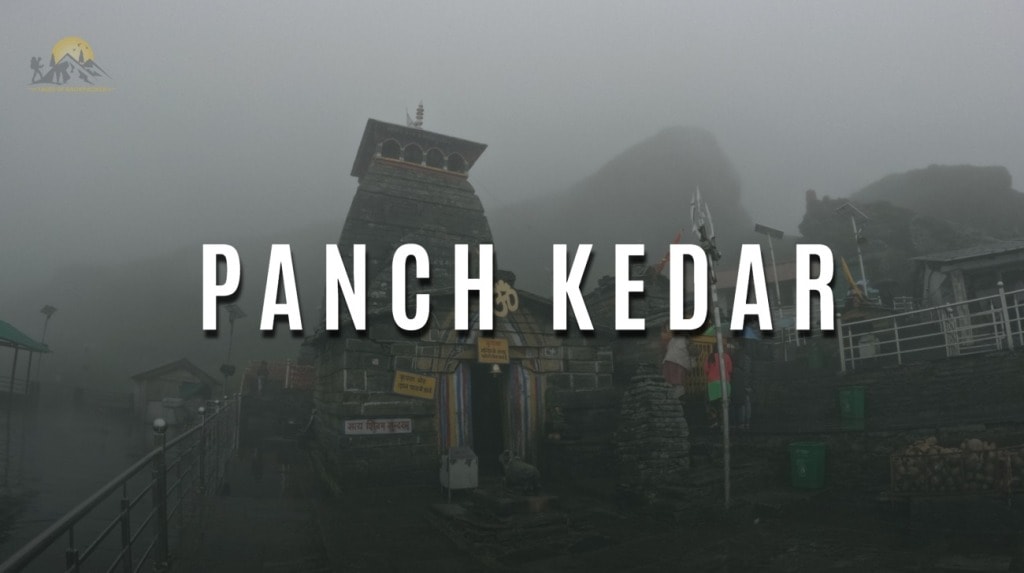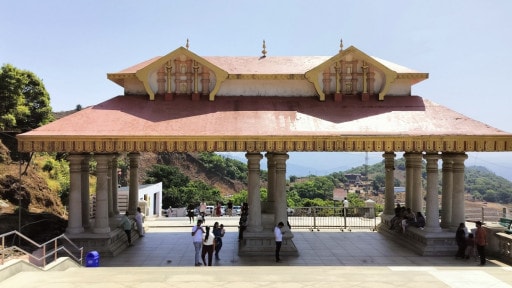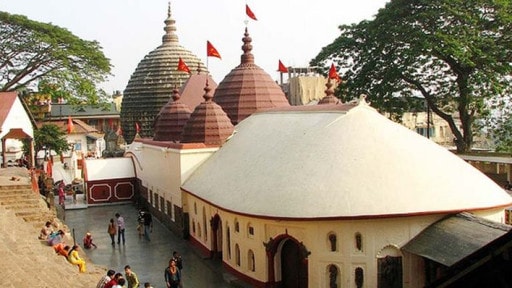Panch Kedar Yatra: As we go deep into this ancient era, the state of Uttarakhand stands on top for its captivating history, spirituality and spectacle craftsmanship. There are various Hindu temples dedicated to several divinities in Uttarakhand and is referred to as ‘Land of the Gods’, situated in the Garhwal Himalayan region, India. Lord Shiva is the most admired deity in the state and five such temples where Lord Shiva is worshipped are known as Panch Kedar.
Panch Kedar Yatra, Uttarakhand – History, Route Map, Travel Guide

These five temples are Kedarnath, Tungnath, Rudranath, Madhyamaheshwar and Kalpeshwar which are visited by tourists in this order of significance only. Apart from Panch Kedar temples, you can find many temples and monuments dedicated to Lord Shankara and local people worship him in some form or other.
Panch Kedar History
As per mythology, there are numerous interpretations behind the formations of these five temples. Most people believe Panch Kedar yatra is correlated to the legend of the Pandavas (the heroes of the Indian epic Mahabharata). After the epic Mahabharata war, the Pandavas were seeking forgiveness from Lord Shiva for the sins and bloodshed they caused during the Kurukshetra War.
Shiva, who was very angry with them, tried to avoid them by hiding in the Garhwal Himalayas in a Bull avatar. But he was eventually identified by one of five Pandava brothers, Bhima. On being recognized, the deity disappeared and reappeared in five different forms at five different locations. So, it is believed Pandavas built the Panch Kedar temples dedicated to a part of the Lord Shiva – Kedarnath (the hump of Lord Shiva), Madhmaheshwar (His belly button), Tungnath (Lord arms), Rudranath (His face), Kalpeshwar (jata or hair).
The Panch Kedar Yatra is considered as a spiritual journey for all the pilgrims, it is the most sacred and challenging yatra where thousands of travelers take part every year and finally worship Lord Shiva. As the temples are in the remote and mountainous areas, the trek to the holy place is a rewarding experience for pilgrimage in Hinduism as it gives you a chance to connect with the deity and explore some of the most worshiped Shiva temples in the world and seek blessings.
Panch Kedar Temples List
Kedarnath Temple
The Kedarnath temple is located at an altitude of 11,755 ft in a remote area of the Garhwal Himalayas near the Mandakini River. It is one of the most prominent and revered shrines among the Panch Kedar Temples. Kedarnath is popularly known as “Jyotirlinga temple” which is around 223 km away from Rishikesh and Lord Shiva is worshiped as Kedarnath, the ‘Lord of Kedar Khand’.

The Kedarnath sanctuary is considered the most elevated among the 12 Jyotirlingas and each year amid the wintertime, the vigraham (Symbols) from Kedarnath sanctuary are worshiped at Ukhimath as the temple will be closed for six months. It is believed that the Pandavas pleased Lord Shiva here after the Kurukshetra War by doing penance. The sanctuary is encompassed by snow-clad mountains and glaciers, and it has one Garbhagriha and a Mandapa. There is a statue of Nandi carved out of a rock in front of the temple, which is promptly opposite to Lord shiva.
Lord Kedarnath is in the form of lingam which is triangular in shape representing the bull’s hump at a height of 12 ft and there are various images of Pandavas and Parvati Devi. The other Panch Kedar pilgrimage sites are around Kedarnath itself and due to extreme weather conditions, the temple will be open between the months of April and November only. It can only be reached by trekking and has stunning views of the Himalayas. Kedarnath is the first temple to visit in Panch Kedar Yatra.
Suggested Read: Kedarnath Travel Guide
Best Time To Visit:
The months from May to June and from September to October are considered ideal to visit.
Madhyamaheshwar
The Madmaheshwar temple is located at an altitude of 11,473.1 ft in a remote village of the Garhwal Himalayas in the scenic Kedarnath Wildlife Sanctuary. The 100 years old temple is built in North Indian Himalayan style which is completely covered by the snow-covered Himalayas on the right side, abundant green alpine meadows on the left and solid forest in the backdrop.
It is the second temple to be visited in the pecking order of the Panch Kedar Yatra. It’s an older temple, which is also known as ‘Vriddh-Madmaheshwar’, and a navel shaped Panch Kedar Shivling is worshiped in the temple which is made of black stone. There are two other smaller holy places, one dedicated to Parvati and the other to Ardhanarishwara.
Best Time To Visit:
The temple opens in May every year and the closing date is usually around the time of Diwali which is around November. The ideal time to visit the place is from May to October.
Tungnath Temple
Tungnath Sanctuary is situated among the mountain ranges of Tungnath in the Rudraprayag Locality, Uttarakhand at an elevation of over 12,073 ft. The 1000 years old temple proudly holds the title as one of the highest Shiva temples in the world and it is one among the highest of the five Panch Kedar temples. Tungnath means ‘Lord of the peaks’ which is dedicated to Lord Shiva and is situated just below Chandrashila’s peak. It is the third temple to be visited in the pecking order of the Panch Kedar yatra.

It’s a small temple built in North Indian style, which can barely accommodate 10 people in the chamber. The temple is surrounded by unique architecture of various gods and the black rock which joins the temple at a height of 1 ft on the hills indicates the arms of Lord Shiva. It is believed that this was the place where the hands of the bull emerged and Tungnath Temple is dedicated to Lord Shiva’s arms.
There is a statue of Nandi carved out of a rock in front of the sanctuary, which is straightforwardly facing towards the God symbol in the sanctum. To reach the top of the temple, people need to do a small trek from Chopta and on the way you come across stunning peaks such as Nanda Devi, Chowkhamba, Neelkanth and Kedarnath.
Suggested Read: Complete guide on Tungnath Temple
Best Time To Visit:
April to November is considered the ideal time to visit the temple since the climate is pleasant and moderately chill.
Rudranath Temple
The Rudranath temple is located at an altitude of 11,800 ft above the sea in a remote area of the Garhwal Himalayas. It’s a natural rock formation sanctuary encompassed by thick woodland of lovely Elevated Alpine meadows and rhododendron dwarfs. It is the fourth sanctuary to be visited in the pecking order of the Panch Kedar yatra. Rudranath temple has the toughest trek when compared to the other five temples and on the way, you come across various mesmerizing peaks such as Nanda Devi, Trishul and Nanda Ghunti.
Lord Shiva here is worshiped as ‘Nilkanth Mahadeva’ and it is believed that the idol is Swyam Bhuva, the Shivalinga is shaped like a human face formed on a huge rock. The Rudranath temple is surrounded by holy pools like Surya Kund, Chandra Kund, Tara Kund and Manas Kund. Before visiting the temple, the pioneers often take a shower in the Narad Kund.
Best Time To Visit:
May to October is considered the ideal time to pay a visit to this temple.
Kalpeshwar Temple
The ancient Kalpeshwar Temple is the only Panch Kedar temple which is open throughout the year, and it’s believed to be the most accessible as well. This temple is located at an elevation of 7,2178 ft above sea level in a remote Urgam valley in the Garhwal region. Lord shiva also has other names like Jatadhar or Jateshwar. Kalpeshwar is a small stone temple and through the cave passage you can approach the idol, matted hairs or Jata or Lord Shiva is worshipped here.
It is the fifth and final sanctuary to be visited in the pecking order of the Panch Kedar yatra. Kalpeshwar Temple is built in Nagara style of architecture, its exotic stone marvel and over the years it has been modified many times. Maha Shivrathri is the main festival of this temple which is celebrated on a grand scale and thousands of devotees come every year to witness it.
Best Time To Visit:
It is open throughout the year and can be visited in all seasons including winter.
Panch Kedar Yatra or Trek Details
There are many travel companies who host Panch Kedar trek, one can check with them and book your trip according to the requirements and budget. There are many Panch Kedar tour Packages from different travel agencies.
Suggested Read: Places To Visit In Rishikesh
Conclusion
The Panch Kedar Yatra is quite challenging, and it requires great willpower to complete. As the weather is quite pleasant during the summer months, pioneers usually go to this yatra during this time and devotees who complete this Yatra are believed to be blessed by Lord Shiva. Panch Kedar temples must be visited at least once in a lifetime, and it takes you through a spiritual and life changing journey.





